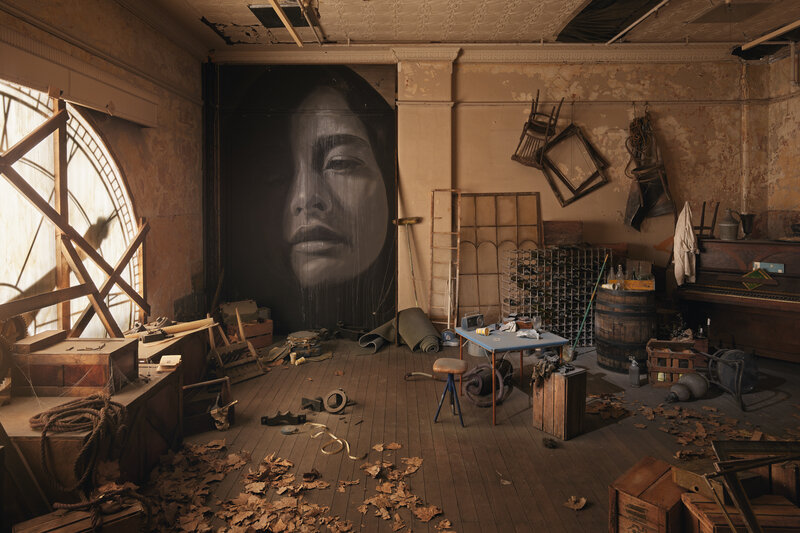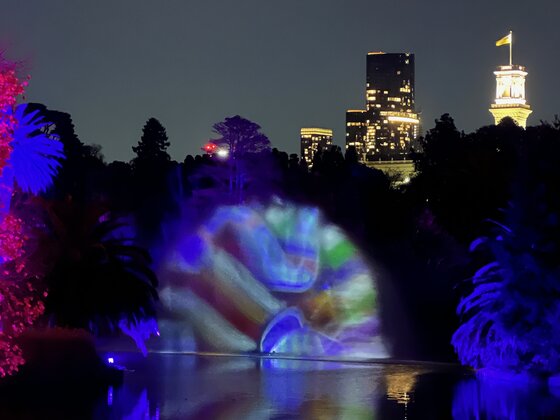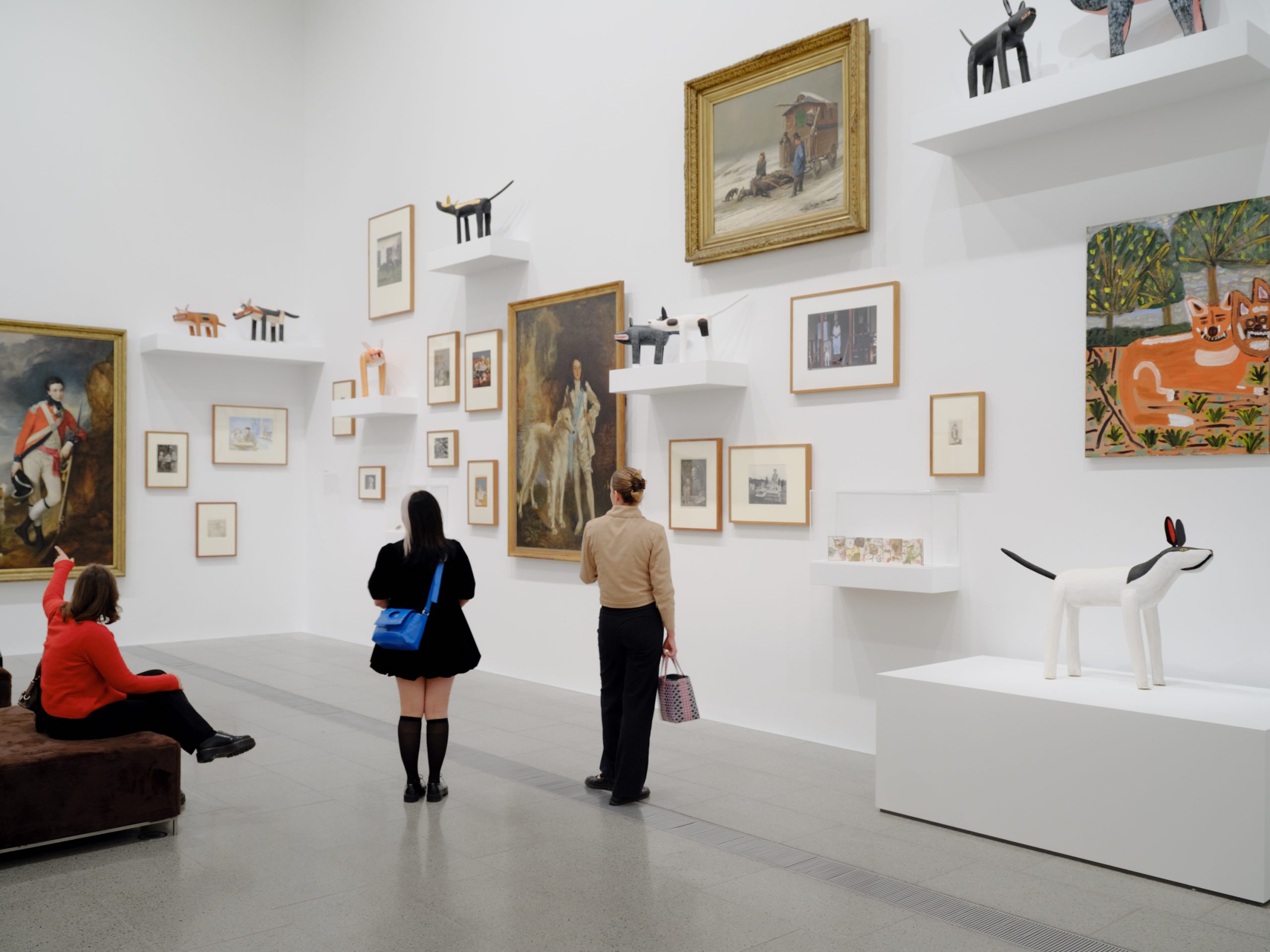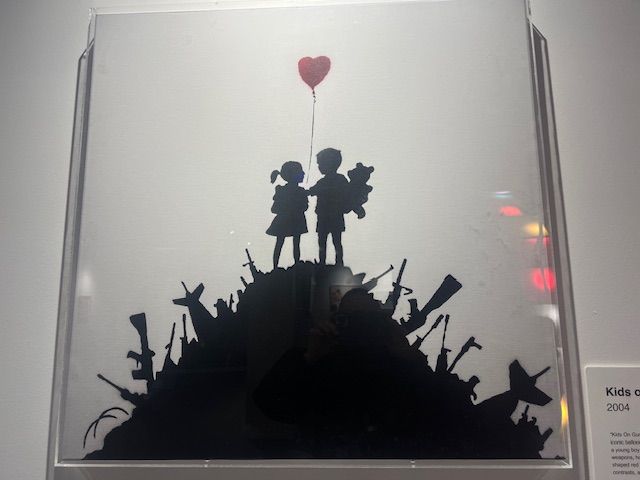Geelong-born, Melbourne-based former street artist Rone (birth name Tyrone Wright) has crafted a remarkable time capsule three years in the making. It is set in the long-abandoned third floor wing of iconic, heritage-listed Flinders Street Station. Time is a nostalgic love letter to mid 19th century working class life in one of the world’s great cities. It is an ode to faded yet enduring beauty, capturing the spirit of Melbourne’s industrious past. It is inspired by an era when European migrants powered the city’s booming manufacturing industries.

There are a dozen multisensory installations in separate rooms, each adorned with Rone’s signature murals that feature his beautiful muse, model Teresa Oman. They were applied onto rice paper because he was, understandably, not allowed to paint directly onto the interior walls of the building. When the exhibition closes, they can then be peeled off without causing any damage.
The works contain fine detail of a period of Melbourne’s history long lost to progress. They combine visualisations with classical music composed by sound designer Nick Batterham. Using photo references, Rone pieced together a vision for each of the rooms. Among them are a glorious floor to ceiling library with not one, but two tight, steel, spiral staircases. Fourteen old-style manual typewriters appear on metal tables alongside weathered chairs. Sewing machines and benches proliferate, next to a custom-built cutting table.

A classroom, wooden chairs, a blackboard and books strewn about sit next to a small artist studio. There’s a pharmacy, old bottles, signs and bric-a-brac, all carefully sourced or created anew to look old. A mail sorting station is adjacent to a phone switchboard of yesteryear. And the piece de resistance is a 12-metre long glasshouse overrun by creepers, the highlight of which is another large, striking mural of Teresa Oman. Old newspapers adorn the windows of the lengthy corridor that leads from one room to the next. All appears dusty, with cobwebs in abundance.
Those responsible for this colossus of an exhibition include set builder director Callum Preston, set decorator Carly Spooner and a team of more than 120 Victorian creatives and professionals. But, wait, there’s more. Time continues beyond the third-floor space. A few doors down at ground level is a free newsagency installation, which features historic papers and a magazine wall.

Rone’s Time is mighty special and transformative. In my case, not only do I greatly admire the work, but it caused me to reflect on the professions of my mother and father, who have since passed on. Both came by ship from Europe in the early ‘50s and landed jobs in a matter of days. My dad worked for the fencing company Cyclone before studying at night school to become an accountant. Mum was a comptometrist, a profession that is no longer. A comptometer was the forerunner to the adding machine, which – in turn – became a calculator.
I dare say everyone who chooses to see this exhibition will become lost in their own thoughts … and that is just as it should be. Rone’s Time is a work of bold creativity and dedication, just like the workers who helped make this city what it is today. An hour is all you need to see it all, but you better get in quickly because tickets are selling fast (many days are already sold out) and the exhibition closes on April 23rd.

To book and get more information, go to https://rone.art
Alex First
Other reviews you might enjoy:

Alex First is the editor of The Blurb. Alex is a Melbourne based journalist and communications specialist. He also contributes to The Blurb on film and theatre.





